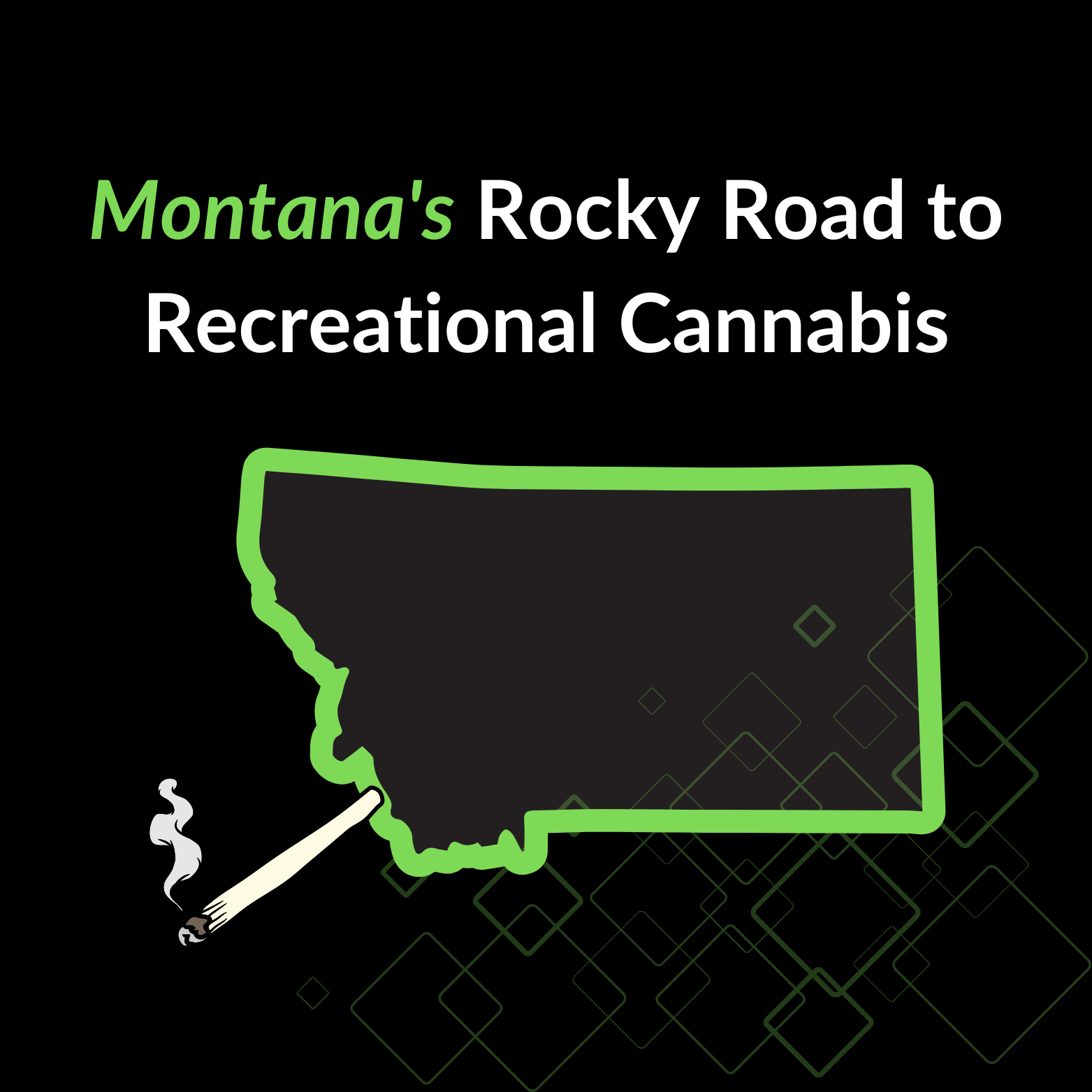
Montana's Rocky Road to Recreational Cannabis: A Timeline of Progress and Setbacks
Montana's journey with cannabis legalization has been anything but smooth. From its early days as a medical marijuana state to its current status as a recreational market, the Treasure State has experienced a series of dramatic shifts in policy. This post explores Montana's tumultuous path to cannabis legalization, highlighting key moments that have shaped the industry we see today.
- Early Medical Cannabis Era (2004-2011)
Montana's cannabis story began in 2004 when voters approved Initiative 148, legalizing medical marijuana with 62% of the vote. This initiative allowed patients with qualifying conditions to use cannabis with a doctor's recommendation. The early years saw steady growth in patient numbers and caregivers, with minimal state oversight.
- The 2011 Crackdown
In 2011, the landscape changed dramatically with the passage of Senate Bill 423. This bill, signed into law by then-Governor Brian Schweitzer, effectively gutted the medical marijuana program. It imposed strict limits on providers, prohibited them from charging patients for cannabis, and required state review of doctors who recommended marijuana to more than 25 patients per year.
- Legal Battles and Gradual Restoration (2011-2016)
The implementation of SB 423 sparked immediate legal challenges. The Montana Cannabis Industry Association filed a lawsuit, leading to years of court battles. During this period, the medical marijuana industry in Montana operated in a legal grey area, with some provisions of SB 423 blocked by court order while others remained in effect.
- Initiative 182 (2016)
In 2016, Montana voters approved Initiative 182, which restored and expanded the medical marijuana program. This initiative removed the three-patient limit on providers and added post-traumatic stress disorder (PTSD) to the list of qualifying conditions. It also established a licensing system for providers and testing requirements for products.
- The Push for Recreational Use
Following the expansion of the medical program, advocates began pushing for full legalization. Several legislative attempts to legalize recreational use failed, but public support continued to grow.
- 2020: Recreational Cannabis Legalized
The breakthrough came in 2020 when Montana voters approved two complementary ballot measures: Initiative 190 and Constitutional Initiative 118. I-190 legalized the possession and use of cannabis for adults 21 and over, while CI-118 amended the state constitution to set the legal age for cannabis consumption at 21.
- Implementation Challenges (2021-present)
The road to implementing recreational sales was not without obstacles. The state faced delays in establishing regulations, and the legislature made several adjustments to the voter-approved law. House Bill 701, signed in May 2021, made significant changes to the cannabis program, including allowing counties to opt out of allowing recreational sales.
- Current State of the Market
As of 2024, Montana's cannabis market includes both medical and recreational sales. The state has a tiered licensing system for cultivators based on canopy size, and separate licenses for manufacturers, retailers, and testing laboratories. Local jurisdictions have the power to prohibit recreational dispensaries, leading to a patchwork of access across the state.
- The Impact of Regulatory Uncertainty
Montana's cannabis industry has been significantly impacted by the regulatory rollercoaster it has experienced over the past two decades. This constant flux has had several detrimental effects:
- Business Instability: The back-and-forth nature of regulations has made it difficult for cannabis businesses to plan long-term. Investments in infrastructure, personnel, and product development have been risky, with operators always wary of potential shutdowns or severe restrictions.
- Patient Access Issues: Medical patients have faced periods of limited access, particularly following the 2011 crackdown. This inconsistency in availability may have pushed some patients to seek alternative treatments or turn to the black market.
- Economic Losses: The sudden restrictions in 2011 led to job losses and economic hardship for many in the industry. The subsequent legal battles and gradual restoration of the program resulted in years of stunted growth and lost tax revenue for the state.
- Investor Hesitancy: The unstable regulatory environment has likely deterred potential investors, slowing the industry's growth and limiting its economic potential.
- Consumer Confusion: Frequent changes in laws and regulations have led to confusion among consumers about what is legal and what isn't, potentially dampening participation in the legal market.
- A Path Forward
To create a more stable and thriving cannabis industry in Montana, policymakers could consider the following approaches:
- Regulatory Consistency: Establish a clear, long-term regulatory framework that provides certainty for businesses and consumers alike.
- Streamlined Licensing: Implement a more efficient and transparent licensing process to encourage participation in the legal market and reduce barriers to entry for small businesses.
- Local Control Balance: While maintaining local opt-out provisions, provide incentives for localities to participate in the legal market, ensuring more consistent access across Montana.
- Robust Social Equity Programs: Implement programs to support communities disproportionately affected by past cannabis prohibition, fostering a more inclusive industry.
- Interstate Commerce Preparation: Position Montana to participate in potential future interstate commerce by developing a regulatory framework compatible with potential federal standards.
- Education and Destigmatization: Invest in public education campaigns to combat lingering stigma and ensure understanding of laws and potential benefits and risks of cannabis use.
- Research Support: Encourage partnerships between the cannabis industry and Montana's universities to conduct research on cannabis's medical applications and its economic impact on the state.
- Future Outlook
Looking ahead, Montana's cannabis industry faces both opportunities and challenges. While the market continues to mature, issues such as banking access, federal legalization, and local control remain ongoing concerns. As neighboring states like North Dakota and South Dakota grapple with their own cannabis policies, Montana's experience offers valuable lessons in the complexities of transitioning from prohibition to a regulated market.
Conclusion
Montana's journey with cannabis legalization reflects the complex and often contradictory nature of drug policy reform in the United States. From the highs of initial medical legalization to the lows of the 2011 crackdown, and finally to the current era of recreational use, Montana has experienced it all. By adopting a more stable and forward-thinking approach to cannabis regulation, Montana has the opportunity to transform its tumultuous history with the plant into a model for sustainable industry growth. This could maximize economic benefits for the state while ensuring safe access for both medical patients and adult-use consumers. As the state continues to refine its approach to cannabis regulation, it serves as a case study in the challenges and opportunities that come with ending prohibition.


